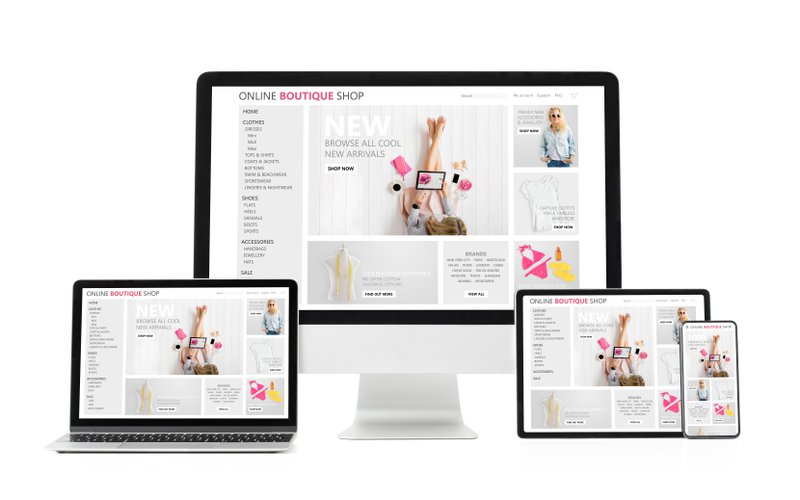eCommerce has seen significant changes over the past two decades. Initially, online shopping was purely a way to move brick-and-mortar resources online. But with an increase in demand and a competitive landscape, eCommerce marketplace platform operators have had to up their game far beyond traditional practices.
By 2025, global eCommerce is set to account for nearly a quarter (23.6%) of all consumer spending, exceeding $7 trillion. To stand out, platforms must strategically analyze user behavior, personalize their shopping journey, and streamline every touchpoint. Effective eCommerce merchandising demands memorable branding, quality imagery, and innovative product displays.
Online marketplace merchandising is challenging with constantly changing consumer trends and fluctuating supply and demand. In this guide, we address the major complexities facing eCommerce marketplace platform operators and how to overcome them.
Challenge #1: How to Manage Seller Ranking
Having some of the most in-demand products in your eCommerce marketplace platform means nothing if they’re not visible to customers. Since users rarely look past the first search engine results page (SERP), it’s essential to have a systematic way of ranking products and brands on your search results display.

To ensure high-quality, in-demand products appear first on searches, base your search result displays on an algorithm that automatically optimizes product listings. This enhances the customer experience by providing accurate search results, leading to more sales.
Amazon, for example, has developed its A10 Amazon algorithm to automatically determine which of its thousands of listings end up at the top of the SERP. Criteria that influence Amazon’s product and brand ranking include:
- Strategic keyword use in product listings
- Product listing content and format
- High-quality images
- Past sales history
- Retailer age (experienced retailers gain preference)
- High-ranking customer feedback and reviews
- Handling of returns and customer queries
- Product variety
So, how do you optimize your own eCommerce marketplace platform similarly? A tool like Smart Merchandiser enables algorithmic merchandising on your site and automatically ranks products based on:
- Product views
- Conversion rates
- Quantity sold
- Abandonment rates
- Customer ratings and reviews
- Seller reputation
- Seller handling of returns and queries
- On-time fulfillment
- Inventory
In addition, Smart Merchandiser is currently working on ranking products on the SERP according to user profiles and past purchase behavior. The ranking algorithm becomes your best ally by strategically displaying products based on gender and personal preferences. As a result, you’ll personalize and elevate the user experience.
Challenge #2: How to Manage Brand-Spotlight Products
One of the most frustrating things for eCommerce store visitors is having to go through multiple search results pages before finding the product they’re looking for.

For example, a customer looking for a beach towel will search the term “towels” or “beach towel.” If the search results display all towel listings without additional filters, the user might have to look through more than a hundred types of towels before getting to the first beach towel.
If they don’t see a beach towel after the first one or two pages, the search becomes frustrating and feels like a waste of time. They assume you don’t have what they want and move on to another store.
By optimizing the category filters on your eCommerce marketplace platform, you let users pinpoint exactly what they want in an instant. Not only should the user be able to filter the product and its category, but they should also be able to narrow down options in color, size, gender (if applicable), and price.
Another key filter to incorporate is the product brand. In fact, spotlighting popular brands can play a key role in your merchandising strategy. Brands hold a certain appeal and power, and users may search. for items compatible with products they already use–Apple vs Android, Garmin vs. Polar, or Samsung v.s LG.
Incorporating brand filters and spotlighting the most popular brands enhance the user experience. In addition, you identify your platform with high-quality brands and products in high demand.
Challenge #3: Out-Of-Stock and Back-In-Stock Alerts
eCommerce inventory management gets complicated when dealing with multiple brands and suppliers and offering multi-channel purchase avenues. In a digital landscape, manual inventory tracking is superannuated. Manual processes are time-consuming, labor-intensive, prone to error, and simply can’t keep up.

The only way to effectively manage your eCommerce marketplace platform inventory is to incorporate automated eCommerce inventory management software into your tech stack. A tool that automates real-time stock alerts lets you:
- Maintain consistent stock levels
- Streamline multichannel product availability
- Eliminate manual stock-taking errors
- Prevent fulfillment delays
- Optimize warehouse miscommunication
Smart Merchandiser, for example, automates stock alerts when the item meets predetermined parameters. You can set alerts for reorder points, bulk orders, new shipments, and slow-moving stock, among other criteria.
In addition to overcoming your inventory challenges, the tool enhances the user experience by allowing customers to see when products are running low. This creates a sense of urgency to check before items are out of stock. If customers miss out, you can automate customer alerts for when items are back in stock.
Smart Merchandiser’s inventory alerts also enable you to optimize product displays by keeping in-stock items front and center. This helps you maximize revenue by balancing stock intake and sales.
Challenge #4: Your Site Is Not Optimized for Mobile Shopping
Optimizing your site for mobile is one of the most important things you can do to enhance the success of your eCommerce marketplace platform. Nearly one-third of American Internet users purchased mobile phones every week as of late 2021. In 2022, mobile eCommerce showed an almost twofold growth since 2019, surpassing $430 billion.
When eCommerce platforms aren’t optimized for mobile shopping, content is difficult to navigate and appears distorted. This makes it hard to complete a purchase and drives consumers to competitor sites with little chance of returning.

Besides being key to improving the user experience, a mobile-friendly site is one of the criteria Google assesses when determining your search result ranking. Google prioritizes indexing sites that are optimized for mobile.
If you fail to provide a streamlined, user-friendly shopping platform–regardless of the user’s device–you are missing out on a significant number of potential sales every single day.
Overcome Merchandising Challenges With Smart Merchandiser
eCommerce marketplace platform merchandising can be challenging. With ever-changing consumer demands, a highly competitive market, and multiple touchpoints to consider, you need the right tools to stand out from the crowd.
Smart Merchandiser’s eCommerce merchandising solution empowers you to make accurate data-based decisions regarding inventory, product listings, and marketing. You can manage inventory, optimize catalog displays, and access real-time metrics such as product views, sales, and consumer behavior with a single tool. Smart Merchandiser also streamlines processes and saves your team significant time with automated functions and a user-friendly dashboard.
Schedule a demo today and discover how strategic visual merchandising with Smart Merchandiser can boost your bottom line.



